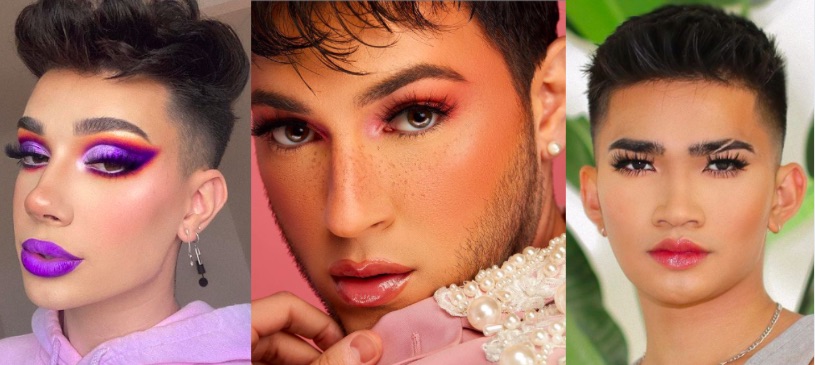When Danny Gray entered the famed Dragon’s Den to market his men’s make-up brand, War Paint, he walked out having shattering a long-held misconception.
Gray, who had formed the brand in 2018 after his own appearance struggles in his younger days, had all five Dragons at his feet after a pitch that was described as “flawless”.
In February 2020, Gray’s products were given a permanent space at John Lewis’ flagship Oxford Street store, with demand 50% higher than had been anticipated.
It made a clear case for the popularity – and societal acceptance – of men’s makeup.
The rise of these products, and indeed male grooming in general, has only continued to grow since, with championship football team Norwich City having War Paint as a sponsor on their warm-up kit, exposing the brand – and its message – to billions worldwide.
It’s easy to ask how we got to this point. The answer is two-fold:
Men’s makeup not only symbolises a changing marketplace, but a wider awareness and acceptance of men’s makeup and changing attitudes of what it means to be a man.
A confidence booster
War Paint founder Gray himself suffered with Body Dysmorphic Disorder in his early adulthood, with men’s makeup an essential tool in helping him to physically go outside and be seen in public. It seems that he is not alone – a YouGov survey in 2019 revealed that men’s makeup usage was on a rapid rise. It showed:
- One in twenty British men wear makeup to some extent.
- One in ten men aged between 18 and 24 have worn makeup in private.
- 15% of men said they would wear makeup because they “found it fun”.
- 8% of men wore it to boost their confidence.
These numbers may seem fairly small. But make no mistake, it is clear that for a variety of reasons, men’s makeup is taking up more shelf space in health and beauty stores and in the cupboards of men around the country.
The rise of social media has helped proliferate greater acceptance of men’s makeup. As worded by the Guardian, social media “has helped turn men’s makeup and grooming from a “why” to a “why not”.”
Beauty bloggers and other celebrities have increasingly come out in support of products which help promote a better version of themselves, cover long-term insecurities over appearance and in general make them feel and look better. As for all users of beauty products, the growing range of products available allow for creativity and expression, shaking off the rigid assumption that men simply do not and should not wear makeup.
This has been coupled with a growing awareness of and appreciation for mental health issues. More men – who have in many cases spent years suppressing appearance-related concerns – are coming to see makeup as a tool for self-care. Regardless of view, makeup is becoming a product for all, making it a tool of a wider gender revolution.
The cultural shift
Much like makeup allows men to redefine themselves, it also redefines masculinity.
This battle has raged on for decades. Makeup has historically been deemed a necessity for women so as to impress men who would, as the theory went, be the breadwinners for the family. Makeup was part of the rigid expectation that women were to look pretty, and not much else.
However it has been proven that Gen-Z children – born from the mid-1990s to the early 2000s – are considerably more gender fluid, with the traditional gender boundaries of ‘men’ and ‘women’ disintegrating as historical inequalities continue to be addressed.
Growing usage of men’s makeup shows that the image of what it means to ‘be a man’ has changed – a change that looks set to continue as the norms surrounding gender continue to shift.
Interestingly, it has been suggested that women could be the key to the continued rise in acceptance of men’s makeup. Victoria Beckham admitted on This Morning that she and husband David share beauty products, and it is believed that women being accepting or encouraging of husbands and boyfriends using beauty products may help men over 30 overcome the barriers of masculinity, which are much more rigid in older age groups.
There is still a way to go, though. The men who are frequently seen as pioneers of male makeup wearers, such as CoverGirl’s first CoverBoy, James Charles, are gay men, who perhaps are more used to going against societal norms. For many straight men, the subject still remains taboo, and it may take some time for mass of acceptance to be reached.
But the work of Gray and others indicates that this is no trend, but a societal and cultural shift. Whether it be merely to get rid of under-eye bags, or to help cope with a restrictive mental illness, men’s makeup offers a freedom and confidence which we should all be behind, regardless of if we use the products or not.
By Callum Parke



I’m impressed by the depth of your knowledge on the topic. Your post demonstrates a thorough understanding and expertise. click here for more insights and details.